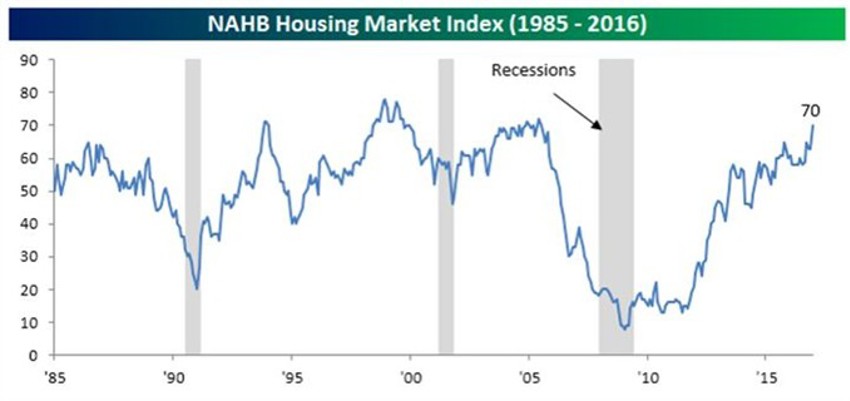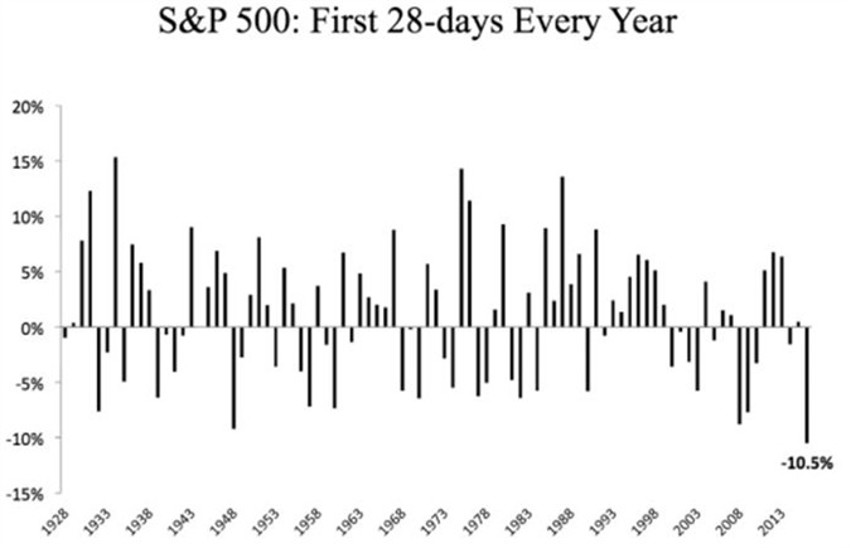Is Market Fear Finally Thawing?
Dot Plot What?
Pretty amazing how market perspective shifts and what causes it.
In this case, it was an election.
Even a few months ago the market shivered if anyone even mentioned an interest rate hike.
This week saw the US Federal Reserve increase its target short-term interest rate to 0.75%, and the market barely sneezed.
Still, many categorise this as a "tightening of monetary policy." In time we suspect we’ll find it’s far more productive to define this as monetary policy move where things got slightly less accommodative.
With a view to calming nerves and showing that the market and the economy has little to fear from Wednesday's rate move, here are a few things we should consider:
Financial markets are enjoying plentiful liquidity conditions, confidence in general is rising and these near-record low rates were more a sign of raving fears under the surface.
The fact that rates have moved upward from ridiculously low levels is merely a reflection that some of this fear is finally thawing.
Keep in mind: Higher interest rates don't threaten growth. Interest rates are higher because growth expectations are somewhat stronger.
That is not bad news....

The above chart above shows a snapshot that compares the current real short-term rate (in red) with the market's expectation for what the average real short-term rate will be over the next 5 years (blue).
As Dr Ed Yardeni points out: The current real short-term rate is about -1%, and that rate is expected to average at just about zero over the next 5 years.
Now, while I know that interest rate hike chatter is nerve-wracking for investors, there is no way that this represents a tightening of monetary policy for the foreseeable future.
Now look again at the above. The real yield curve remains positively sloped (i.e., the blue line is much higher than the red line), which provides another indication that monetary policy is not tight.
More important?
In fact, it’s not even beginning to get tight.
These morning notes will keep you apprised of the time to worry.
And that time will be when the red line approaches and exceeds the blue line (as happened prior to the past two recessions).
That will be the market's way of telling us the Fed is tight enough to threaten growth.
This will probably coincide with a massive shift in investors leaving bonds and loving stocks all over again.
And in our view that milestone is thousands of points away from that type of investor herd movement.
Builders Happy
This little snapshot below shows US builders have not felt this good in years. And the odds are high that they “Ain't seen nothin’ yet.”
Think about the classic film, Field of Dreams: "If you build it, he will come."
The demographic forces barrelling towards our economic pipeline suggest we may want to revise that wording a little bit to: "We better build it because they’re coming."

The above chart shows a few more highlights.
First, manufacturing is turning up nicely as we clear the energy cobwebs out of the system, along with general business conditions.
This should be no surprise to those who tracked many of our notes on chemical sales upturn, which usually comes right before the type of good news we’re seeing in the charts below from the regions noted:


One More for The Gipper
Now look, we all remember how the year started.
In a word: Ugly.
Fear skyrocketed and headlines blared that it was the end - Armageddon (Part 16, Chapter 42, Act VII).
And we all remember the line about it being, “The worst start in 80 years.”
You could almost hear Taps playing in the background.
Thanks to Josh Brown for the below:

Our message at the time was simple (a term that is never to be confused with “Easy”): Stay the course, climb off the ledge, be patient and keep eating your TUMS.
The economy is shifting, the baton is being passed from the Baby Boomers to the Millennials and the Barbell is real.
Demand coming our way is both massive and heavily misunderstood, but also requires patience.
By example, experts thought of the Baby Boomers in the early 1980s as pot-smoking, war-hating hippies who as an age cohort were sure to never amount to anything.
Ouch! Wrong or what?!
The Bottom Line?
Demographics are on our side in a very powerful way for the lengthy ride ahead, just as they were in the dark years of the late 1970s / early 1980s.
That’s because people drive markets.
One of the major barriers to seeing the road ahead is due to our emotions having been on guard for so long it may take some of us years of good news to thaw that fear.
For now, let's just be patient and let these things unfold over time.
There were many bumps in the night as the first Reagan years unfolded on their pathway to massive demographically supported growth. And we should allow for the same in the forthcoming first few years of the Trump presidency.
Finally, look at that top chart above again and burn it into your memory.
It will be fascinating to revisit in 5 years.
